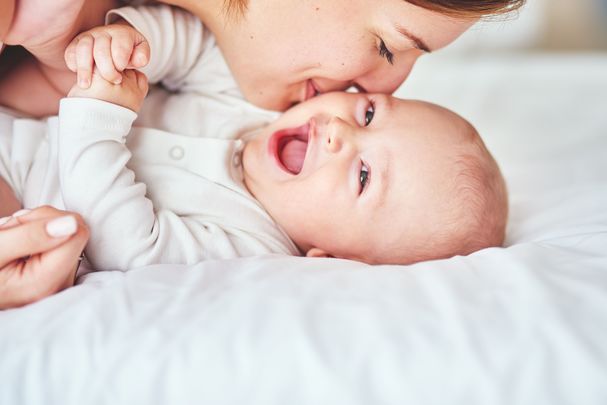Ireland’s Central Statistics Office (CSO) shared key findings from its Vital Statistics Annual Report 2021 on Tuesday, October 31.
There were 60,575 live births in Ireland in 2021, comprising of 30,982 males and 29,593 females.
2021 saw an increase in live births from 2020 when 56,812 live births were recorded.
The birth rate in Ireland in 2021 was 11.9 per 1,000 population, 0.5 higher than the corresponding birth rate in 2020, which was 11.4 per 1,000 of the population.
Number of births in Ireland up 6.6% to 60,575, while deaths occurring rose by 6.1% to 34,844 when compared to 2020https://t.co/swbVdL6SNg#CSOIreland #Ireland #VitalStatistics #VitalStats #Births #Deaths #Marriages #IrishBabiesNames #BoysNames #GirlsNames #BabyNames pic.twitter.com/LhI79w0zga
— Central Statistics Office Ireland (@CSOIreland) October 31, 2023
Average age of mothers giving birth in Ireland
The average age of mothers giving birth in Ireland in 2021 was 33.3 years, the highest average since the age of mothers was first recorded in 1955, the CSO said.
In 1991, the average age of mothers giving birth in Ireland was 29.6, while in 1971, it was 29.4.
Age at maternity in Ireland
The percentage of births to teenage mothers in Ireland in 2021 was 1.2% (710) of all births in 2021, compared to 2020, when it was 1.5% (857). This was the lowest percentage of births to mothers under 20 years since 1958 when it accounted for 1.4% of all births.
From 1959 onwards, the percentage of births to mothers in this age group continued to increase, until it reached a peak in 1999 when 6.2% (3,314) of all births were to mothers under 20. The percentage of mothers in this age group had continued to decrease each year since 1999, prior to a slight increase in 2020.
At the other end of the scale, the number of births to mothers aged 40 years and over is increasing. In 2021, there were 8.4% (or 5,101) of births to mothers aged 40 and over, an increase of 0.1% on 2020. In 1981, mothers under 30 years of age accounted for 59% of births. However, the proportion of births to this age group declined fairly steadily to reach 24.5% in 2021.
Occupation of mother in Ireland
In 2021, just under one in five mothers (17%) stated their occupation as homemaker.
The number varied widely according to the age group of the mother, with 65% of mothers under 20 years and 43% of mothers in the 20-24 year age group, respectively recording their occupation as homemaker.
In contrast, only 12% of mothers in the 30-39 year age group stated their occupation to be that of homemaker while 12% of mothers over 40 years were in this category.
Multiple births in Ireland
There were 1,038 sets of twins and 16 sets of triplets born in Ireland in 2021. There were no sets of quadruplets.
This is equivalent to a “twinning rate” of 17.4 (i.e. the number of sets of live twins per 1,000 maternities which resulted in live births). Over the past 29 years, the twinning rate in Ireland has increased significantly – from 11.7 in 1991, to an all-time high of 19.0 in 2016.
First-time mothers in Ireland
23,472 or 38.8% of all births occurring in Ireland in 2021 were to first-time mothers.
Second-time mothers had 21,076 births (35%) and third-time mothers had 10,856 births (18%).
Mothers that already had three or more live-born children accounted for the remaining 8.5% of births.
Co Sligo was the region with the highest proportion of first-time mothers; of the 783 births which occurred in 2021, 398 of these, or 50.1%, were first time mothers. This share was lowest in Longford (31.5%) and Waterford City (31.6%), respectively.
Births within Marriage/Civil Partnership in Ireland
In 2021, 35,261 (or 58%) births occurred within marriage/civil partnership and 25,314 (42%) births occurred outside marriage/civil partnership. The percentage of births outside marriage/civil partnership was 2.8 percent higher than in 2020.
There were no births within civil partnerships in 2021.
The highest percentage of births outside marriage/civil partnership occurred outside the state, accounting for 60% (22), followed by Limerick City, accounting for 55% (415) of all births, while the area with the lowest percentage was in Dun Laoghaire-Rathdown at 28.3%.
The lowest-ever number of births outside marriage/civil partnership was recorded in 1959 (1.6%). Since then there has been a steady increase in the percentage of births outside marriage/civil partnership, notably since 1980.
Hospital and Domiciliary births in Ireland
There were 60,213 (99%) hospital births in 2021.
The highest number of hospital births in 2021 was recorded in Dublin City with 11% (6,804) of all births. This was followed by Cork County (5,400) and Fingal (4,260) accounting for 9.0% and 7.0% of all hospital births respectively.
There were 362 domiciliary births (including home births and other births that take place in a location other than a hospital) in 2021, 48 more than the 314 recorded in 2020. Such births have dropped from one in three births in the early 1950s to just 6.0 per thousand live births in 2021.
The highest number of births in maternity hospitals in 2021 was recorded in the Rotunda Hospital with 15% (9,089) of all births. This was followed by The National Maternity Hospital, Holles St (7,791), and The Coombe Women's & Infants Hospital (7,683), each having 13% of all maternity hospital births respectively.
Outside of Dublin, Cork University Maternity Hospital had the highest number of births with 7,441 births or 12% of all maternity hospital births in 2021
Nationality of parent in Ireland
In 2021, 78% of mothers were of Irish nationality, 2.0% of UK nationality, and 2.1% of EU-14 (excluding Ireland) nationality. There were 8.4% of mothers from EU-27 (excluding EU-14) while there were 9.8% of mothers of other nationality.
The nationality of the mother was not stated for 0.003% of births.
Births by Location in Ireland
Dublin recorded the highest number of births in 2021 with 17.538, accounting for 29% of all births in Ireland that year.
In contrast, the smallest number of births (3,832) was in the Midland region (Laois, Longford, Offaly, and Westmeath) with 6.3% of all births.




Comments